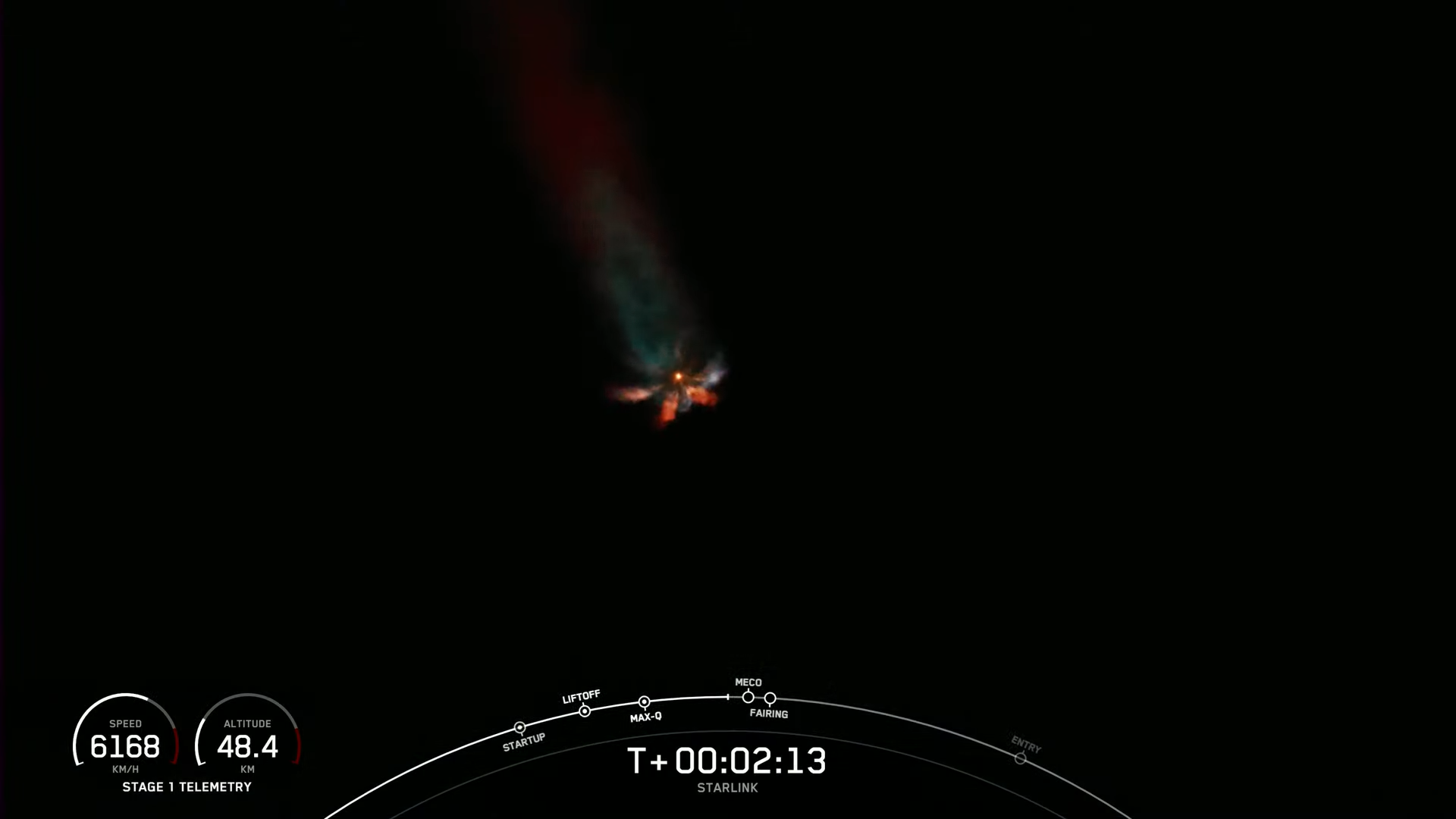
A launch-heavy February officially got underway early Thursday, when a Falcon 9 which previously ferried a pair of FIFA World Cup match balls to and from space last fall roared aloft from historic Pad 39A at Florida’s Kennedy Space Center (KSC). The B1069 core—making her fifth flight, having entered service back in December 2021—went airborne at 2:58 a.m. EST, kicking off a month that is expected to see the launches of two major geostationary payloads for Hispasat and Inmarsat, a pair of O3B mPOWER broadband satellites for SES and a new crew for the International Space Station (ISS).
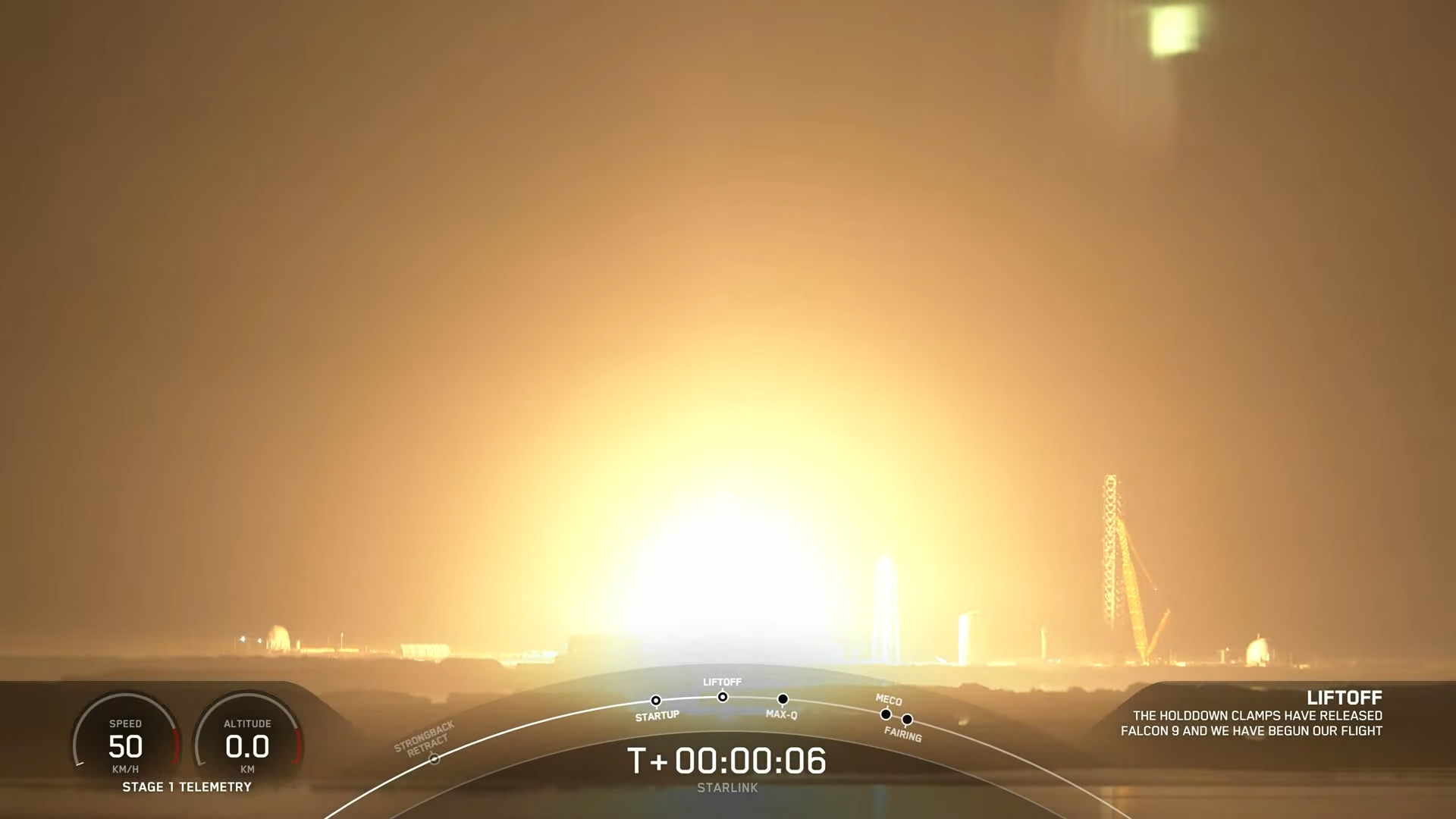
Originally targeted to fly on Wednesday, the 20th anniversary of the loss of shuttle Columbia in the STS-107 tragedy, this morning’s mission found itself pushed to the right following a multi-day delay that impacted its predecessor, another Starlink flight out of Vandenberg Space Force Base, Calif. Last Saturday the Autonomous Spaceport Drone Ship (ASDS), “A Shortfall of Gravitas”, put to sea out of Port Canaveral, bound for a recovery position about 410 miles (660 kilometers) offshore in the Atlantic Ocean.
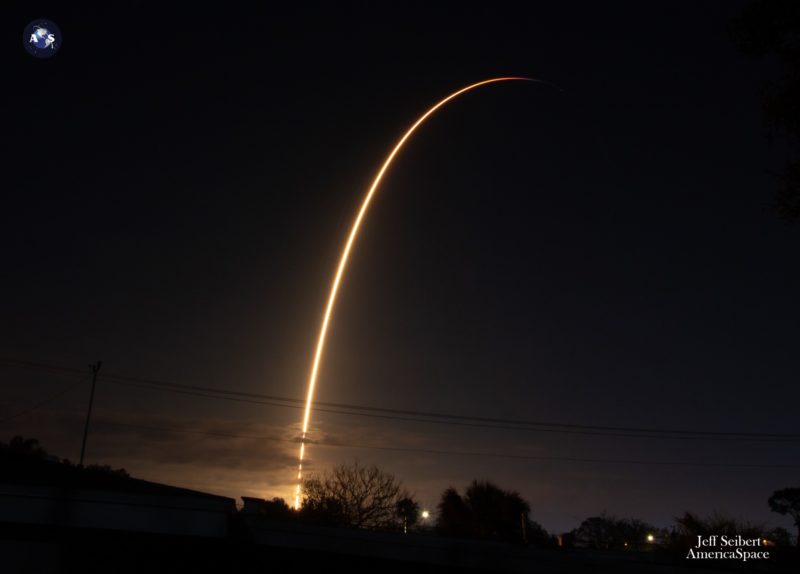
Thursday’s mission was tasked with deploying a “stack” of 53 Starlinks, totaling around 36,200 pounds (16,400 kilograms), and marked the fourth dedicated launch of these flat-packed satellites this year. Starlink’s progress as an internet provider on the world stage advanced in leaps and bounds in 2022, notably through emergency provision granted to Ukraine, following Russian President Vladimir Putin’s invasion in February, and B1069’s own delivery and return, to and from space, of a pair of FIFA World Cup match balls during a flight last October.
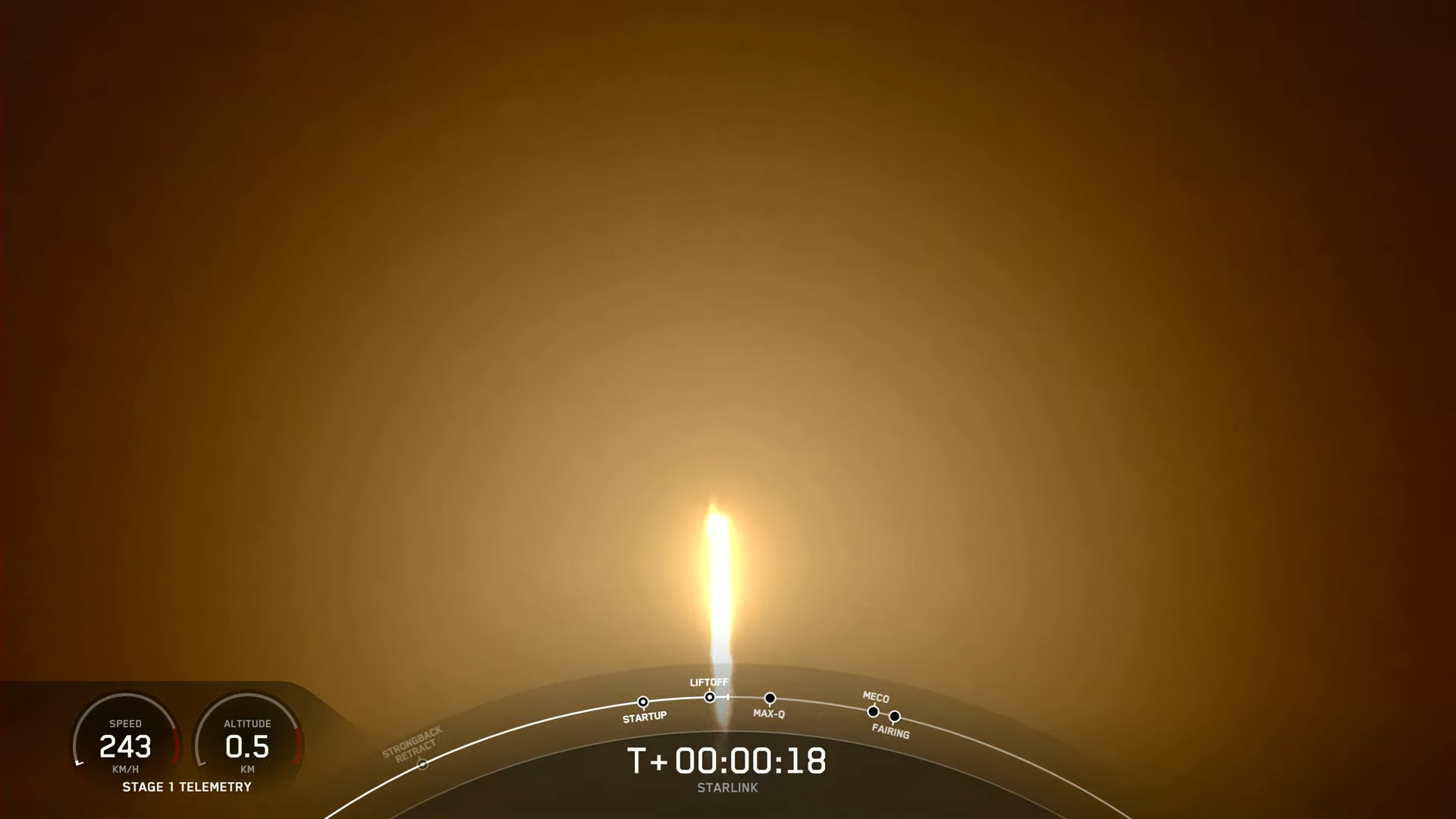
Starlink availability last fall expanded to include Malta, Japan, Jamaica, Finland and—controversially, following the ongoing hijab and anti-government protests—also Iran. In January, Peru and Nigeria also joined the network, bringing to 47 Starlink’s total number of sovereign nations and worldwide markets spanning North and South America, Europe, Asia and Oceania. Nigeria’s accession last month makes it the first African nation to receive Starlink service.
This morning’s pre-dawn launch pushes 2023’s running Starlink tally through 200, as SpaceX also saw its 200th fully successful Falcon 9 mission. Although Tuesday’s Vandenberg launch marked the 200th Falcon 9 to take flight since June 2010, it was actually the 199th full mission success when one takes into account the June 2015 loss of the CRS-7 Cargo Dragon in a high-altitude breakup a couple minutes into ascent.
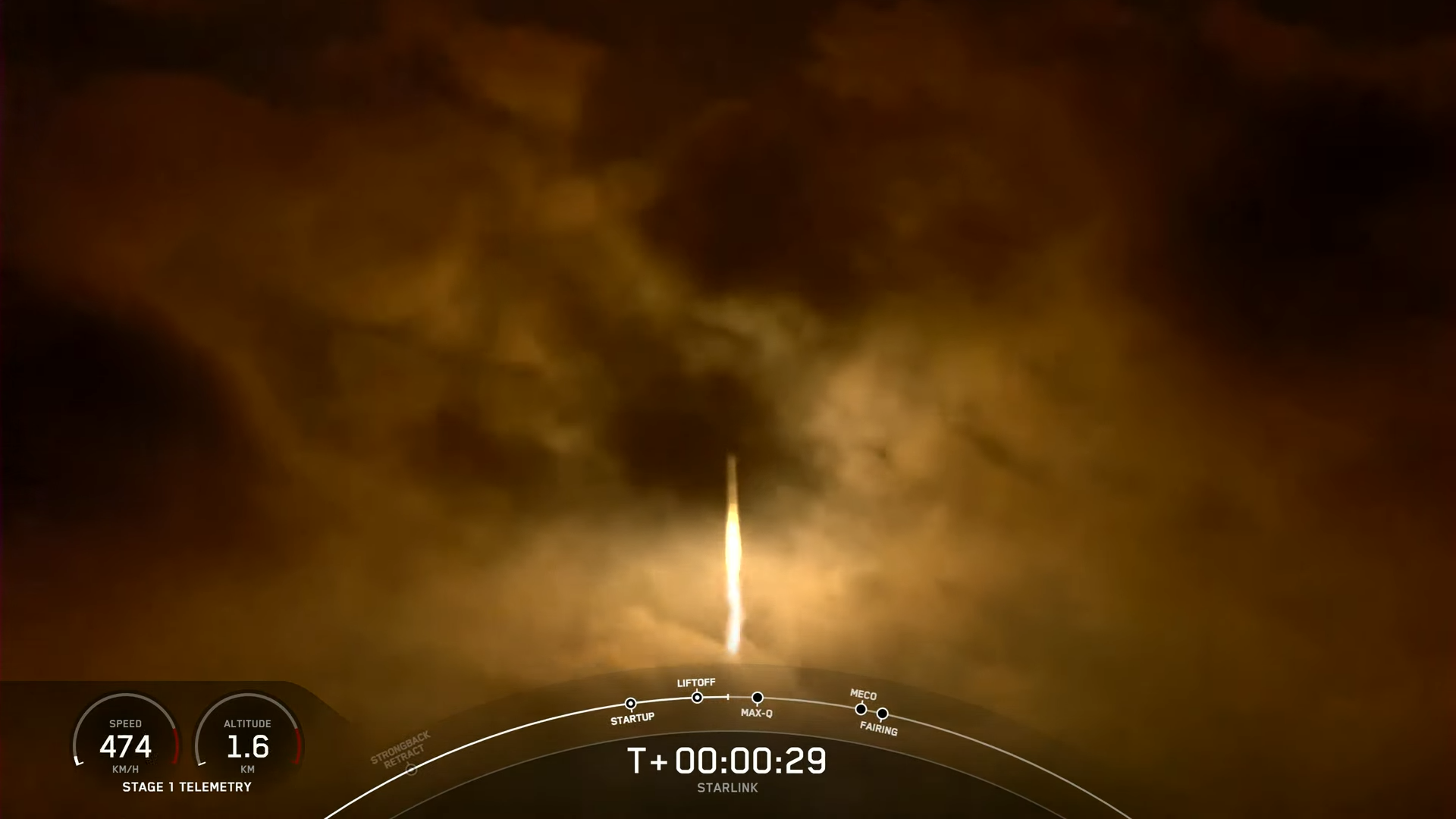
Across that span of 200 successes, SpaceX has delivered over 3,800 production-design Starlinks into orbit on 71 dedicated missions and 45 geostationary communications satellites for domestic and international customers. Thirty humans from eight nations have launched into low-Earth orbit via SpaceX’s Crew Dragon and 26 Cargo Dragons have headed uphill to deliver and return equipment, payloads and supplies to and from the ISS.
Added to that list have been 16 major science missions, including the Double Asteroid Redirection Test (DART) to visit the asteroid Didymos and impact its tiny companion, Dimorphos, South Korea’s first lunar probe and Israel’s ill-fated Beresheet Moon lander. Dozens of Iridium NEXT low-orbiting global mobile communications satellites, five Block III Global Positioning System (GPS) navigation and timing satellites and several classified payloads for the National Reconnaissance Office and other undisclosed U.S. Government entities have also ridden Falcon 9s to orbit.
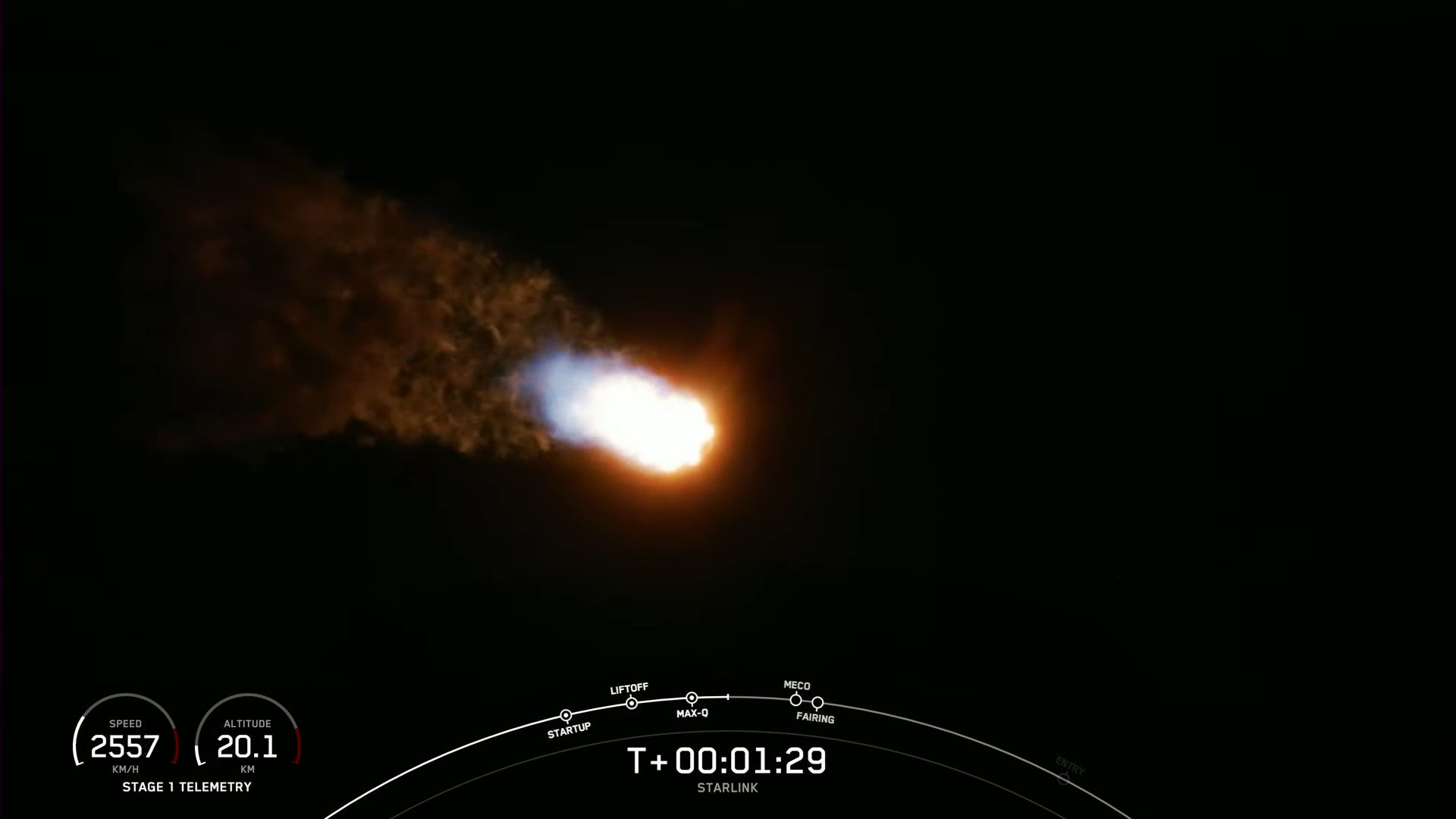
Thursday’s mission was flown by B1069, a Falcon 9 core making her fifth launch in a little under 14 months. Almost lost following a hair-raising ASDS touchdown in December 2021, she was repaired and outfitted with a new suite of nine Merlin 1D+ engines.
She went on to fly three times in 2022. She launched 54 Starlinks late last August, Eutelsat’s Hotbird 13F geostationary communications satellite in mid-October and 40 broadband satellites early in December for London, England-based OneWeb.
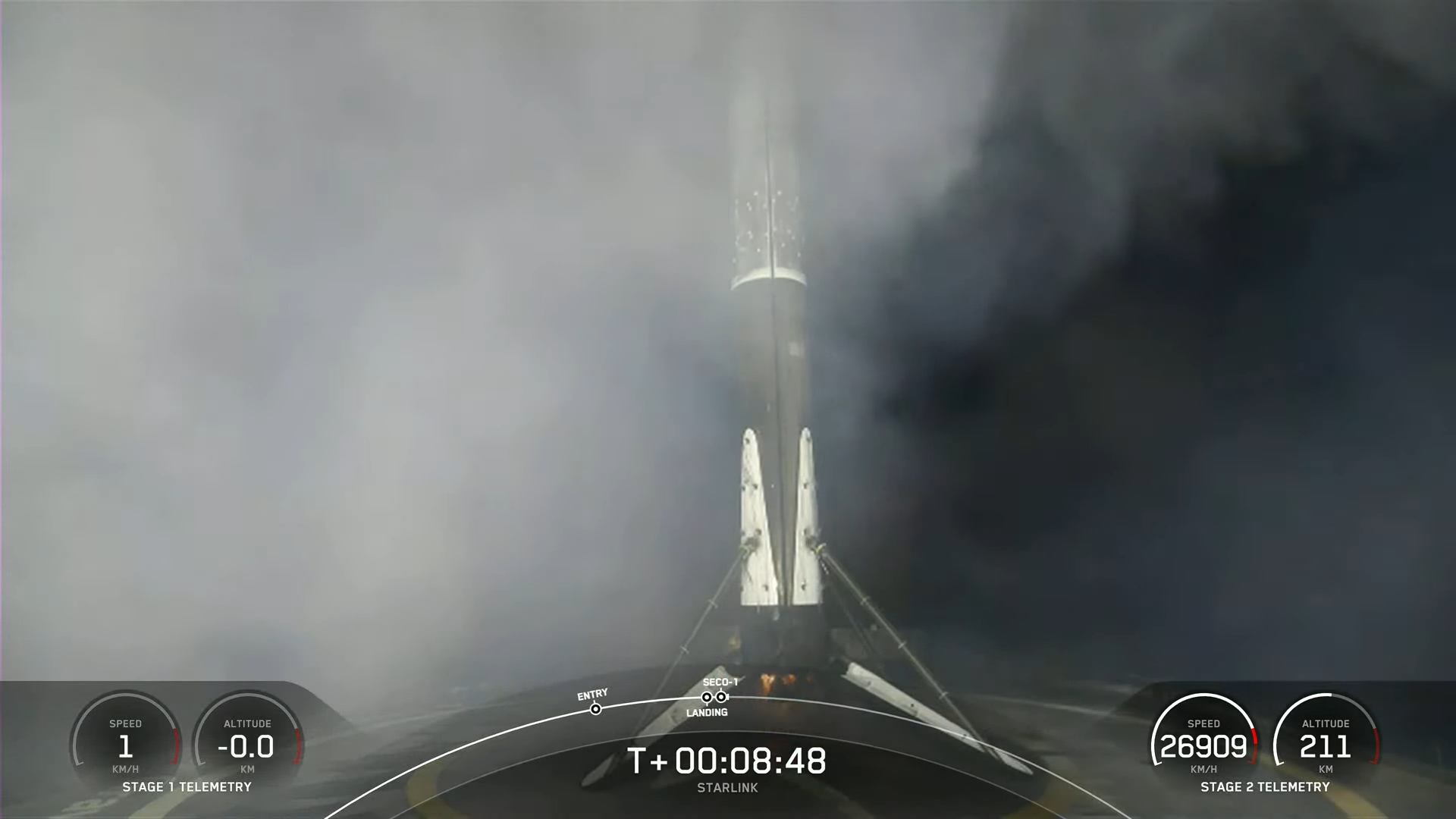
Weather conditions for three launch tries on Thursday morning—a first at 2:43 a.m. EST, a second at 4:24 a.m. EST and a third at 6:05 a.m. EST—were predicted to be 90-percent favorable. But less than an hour before launch, SpaceX refined its first T-0 option to 2:58 a.m. EST.
“Dying frontal boundary is stalled across North Florida this morning, where it will shortly wash out, overtaken by another boundary sliding through the Southeastern U.S.,” noted the 45th Weather Squadron at Patrick Space Force Base in its Tuesday update. “The next system taking shape along the western Gulf Coast on Wednesday will lift the boundary north, allowing the western Atlantic ridge to briefly nose back in.
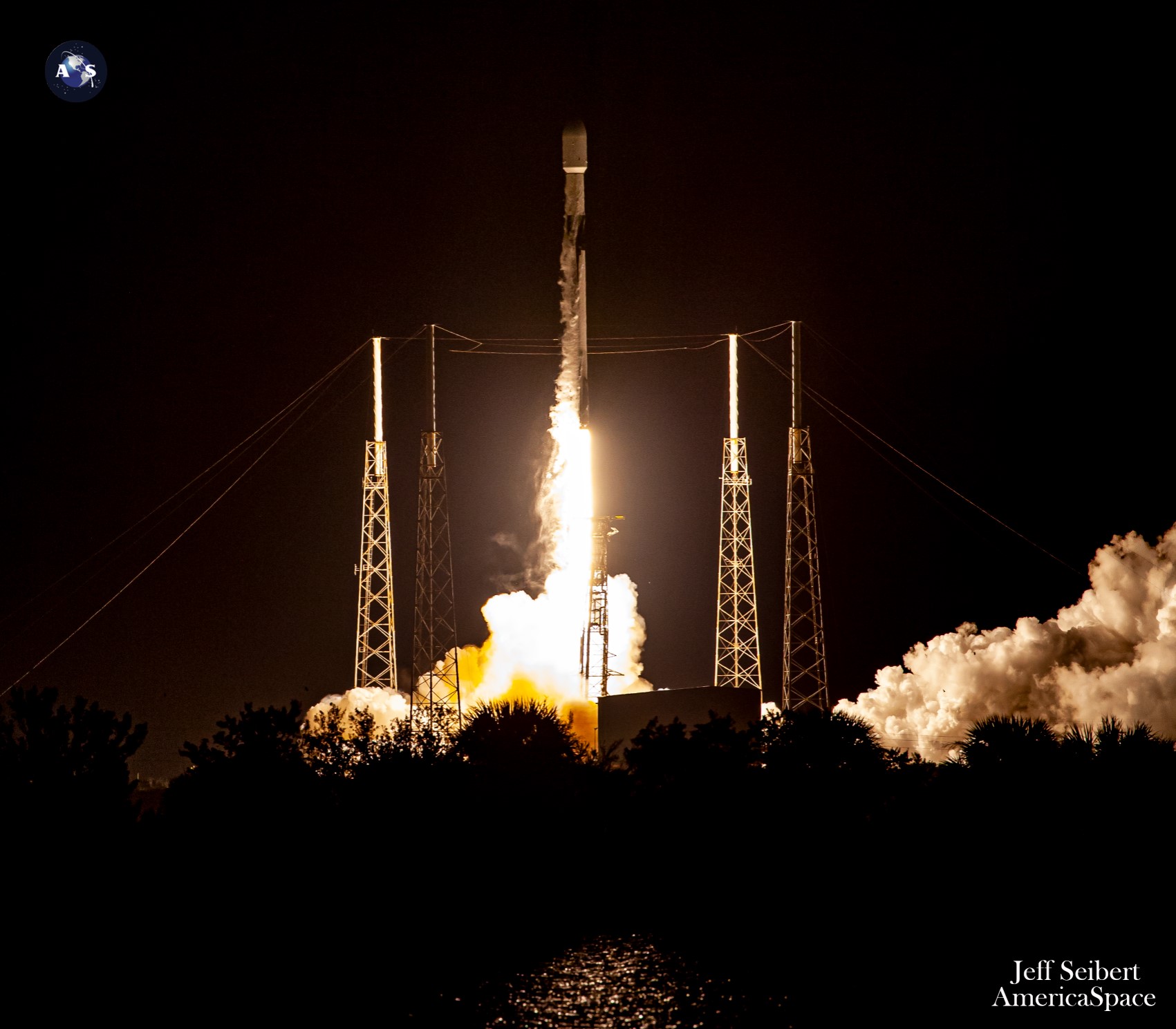
“A light Atlantic shower in the vicinity cannot be ruled out for the primary launch opportunities early Thursday morning, but the threat for significant cumulus clouds at the launch site will be low,” it added. “Light winds will allow fog and stratus development, especially towards the back end of the window.”
B1069 speared into the darkness at 2:58 a.m. EST, powering uphill for 2.5 minutes under the combined thrust of her nine Merlins. She then separated from the stack and commenced a picture-perfect touchdown on the deck of the ASDS, marking the 129th successful drone-ship landing by a “single-stick” Falcon 9 since April 2016.
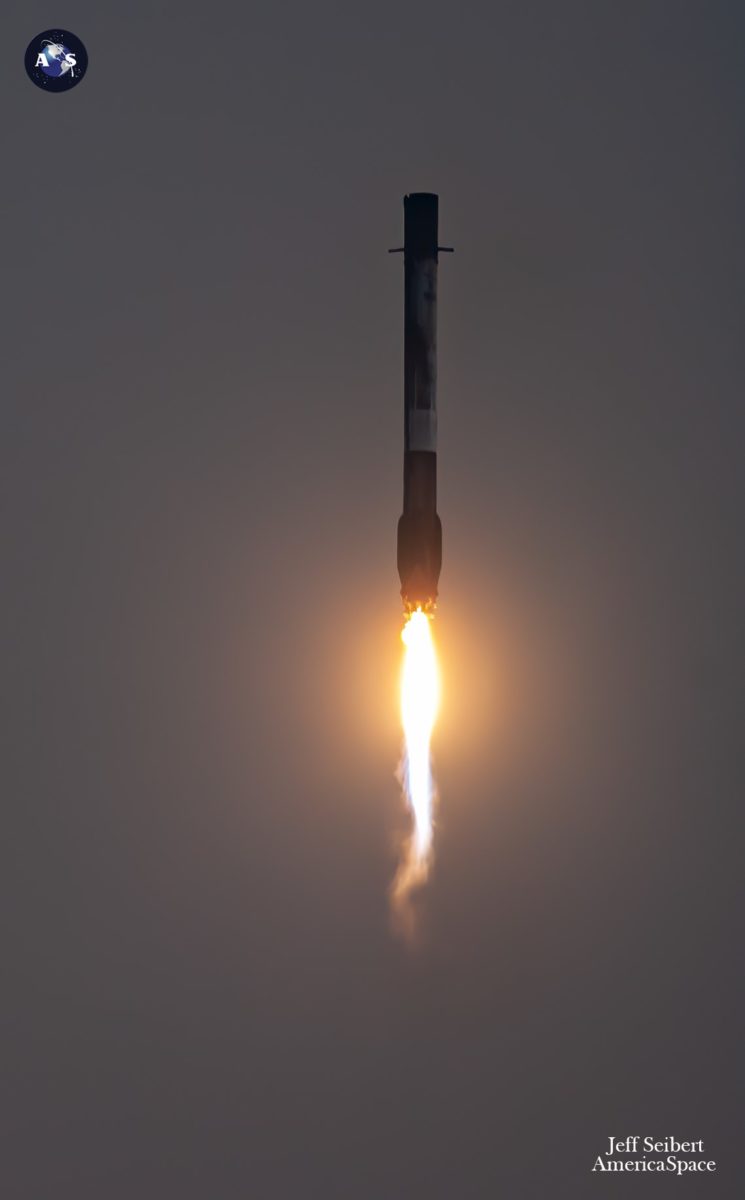
Meanwhile, the Merlin 1D+ Vacuum engine of the booster’s second stage ignited for six further minutes to push the Starlink stack into orbit. As this AmericaSpace story was being prepared, deployment of the satellites was set to occur a little over an hour after Thursday’s launch.
Riding the coattails of a pair of back-to-back seven-launch months—and with SpaceX CEO Elon Musk aiming for up to a hundred missions in 2023—it can be expected that a busy February lies ahead. Although the Hawthorne, Calif.-headquartered organization reveals little in the way of a definitive flight manifest, it can be expected that seven or possible eight launches will be attempted from the East and West Coasts before February is out.
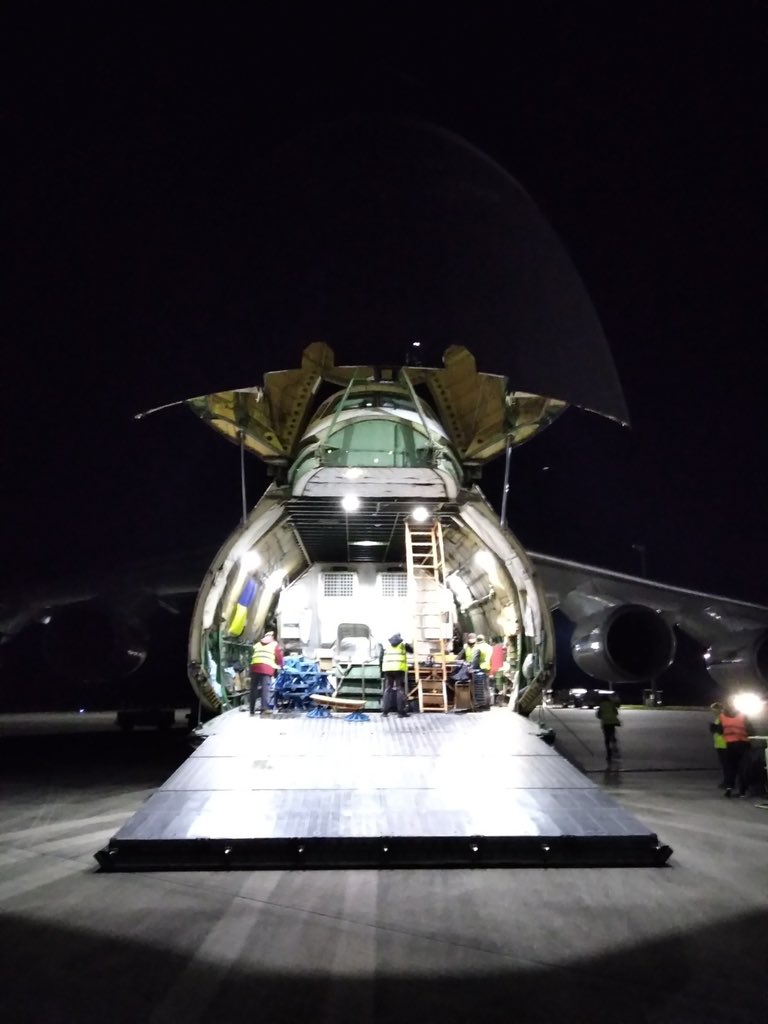
Up next, perhaps as soon as Sunday evening, is the 10,000-pound (4,500-kilogram) Amazonas Nexus High Throughput Satellite (HTS), a geostationary payload flying for Spain’s Hispasat for emplacement at 61 degrees West longitude. Equipped with a new Digital Transparent Processor (DTP), Amazonas Nexus will replace the October 2009-launched Amazonas-2, which is nearing the end of its operational service life.
Contracts to build the Ku-band/Ka-band Amazonas Nexus were awarded to Thales Alenia Space in January 2020, leveraging its all-electric Spacebus Neo-200 “bus” to furnish a 20-kilowatt payload covering the entirety of the American continents, Greenland and air and maritime routes along the North Atlantic Corridor. Its fifth-generation DTP (described as its “main novelty” by Thales Alenia Space) will enhance the satellite’s geographical flexibility should changes occur to initially proposed business scenarios and afford “great resilience to the evolution of the communications market, both in the field of connectivity and data and in the field of contents transmission”.
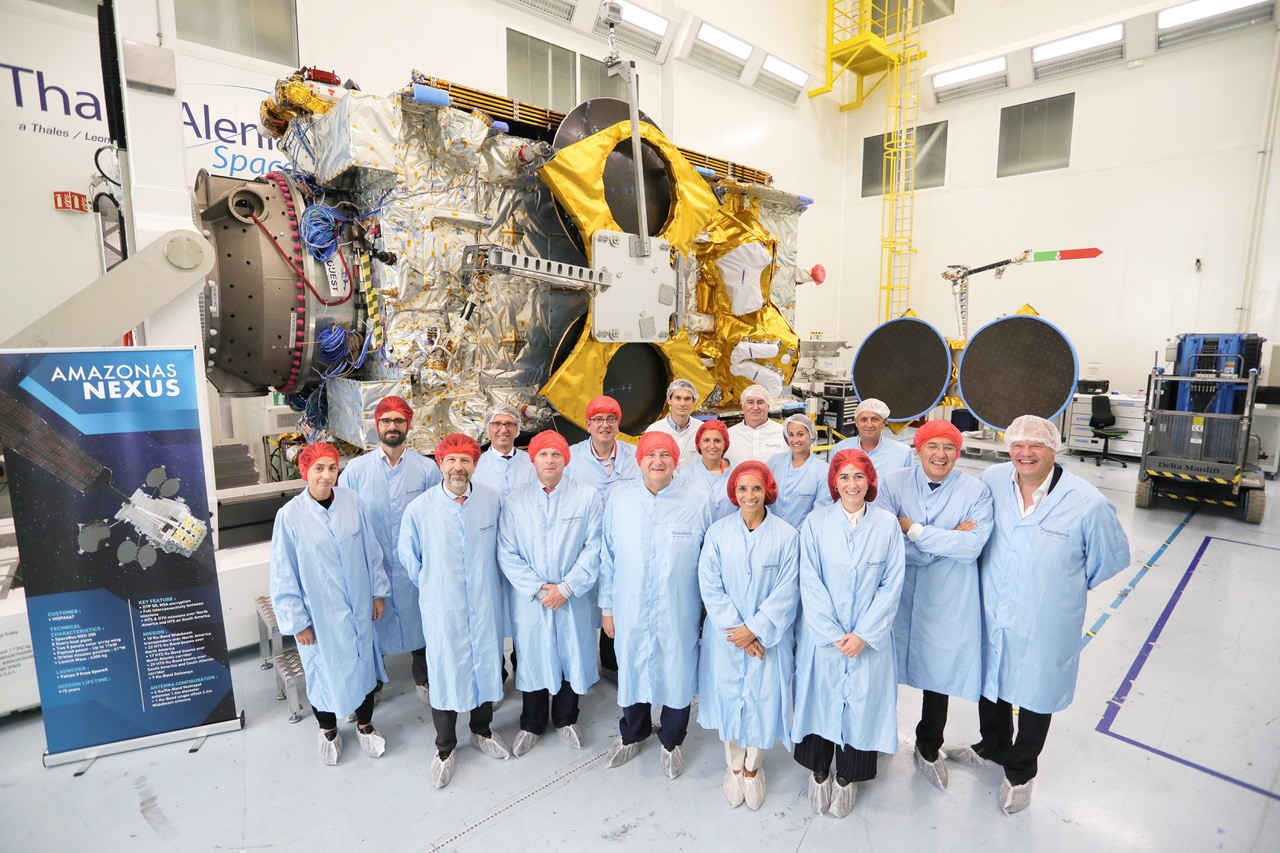
Targeting a minimum 15-year operational lifetime, Amazonas Nexus was initially scheduled to fly in the second half of 2022, but its launch has since slipped into early 2023. Financing of the satellite’s “space segment”—to cover launch services via SpaceX and initial on-orbit insurance—was concluded in June 2021, through an $80.7 million loan from the Export-Import Bank of the United States (EXIM).
Over the past three years, Hispasat has secured several commercial agreements for long-term leasing of transponder capacity aboard the satellite. Aviation broadband provider Gogo signed up to the project in January 2020 and Hispasat is also under contract to embed the U.S. Space Force’s 108-megahertz Pathfinder 2 on Amazonas Nexus. More recently, just last September, high-speed connectivity and entertainment provider Anuvu extended its contract for multi-transponder capacity at 61 degrees West, initially via Amazonas-2, but also with a future eye on Amazonas Nexus.
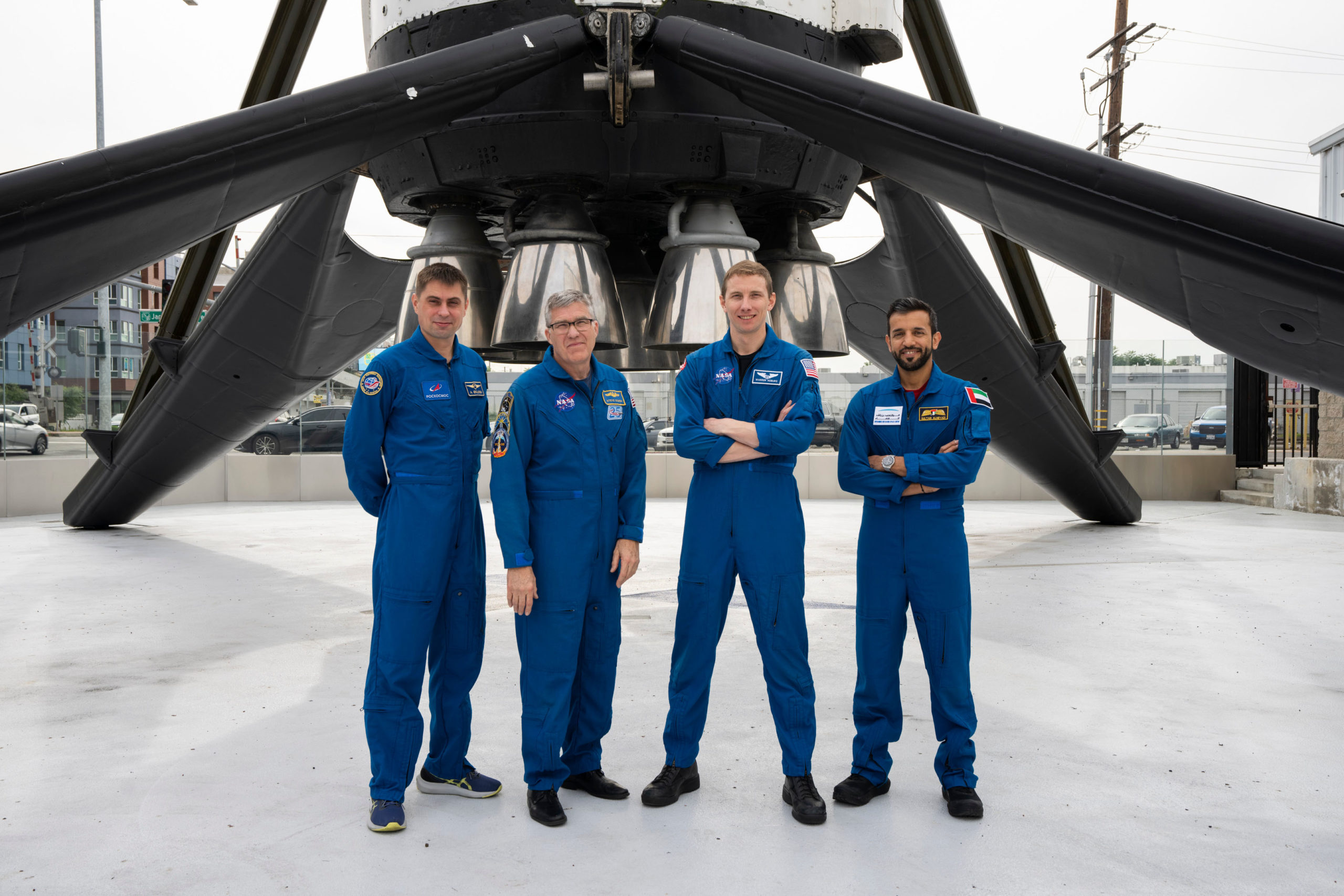
In December 2022, the satellite was transported from Thales Alenia Space’s facilities in Cannes, France and flown via an Antonov heavy airlifter from Aéroport de Nice to Cape Canaveral. After reaching the launch site, it was fueled and put through a battery of final tests, ahead of encapsulation in its Falcon 9 payload fairing.
With launch tentatively penciled-in for early Sunday evening, from storied Space Launch Complex (SLC)-40 at Cape Canaveral Space Force Station, Amazonas Nexus will be boosted uphill by B1073. This Falcon 9 core will be embarking on her sixth launch, having entered SpaceX’s fleet in May of 2022, with an expectation that she will return to alight on the deck of the ASDS, “Just Read the Instructions”.
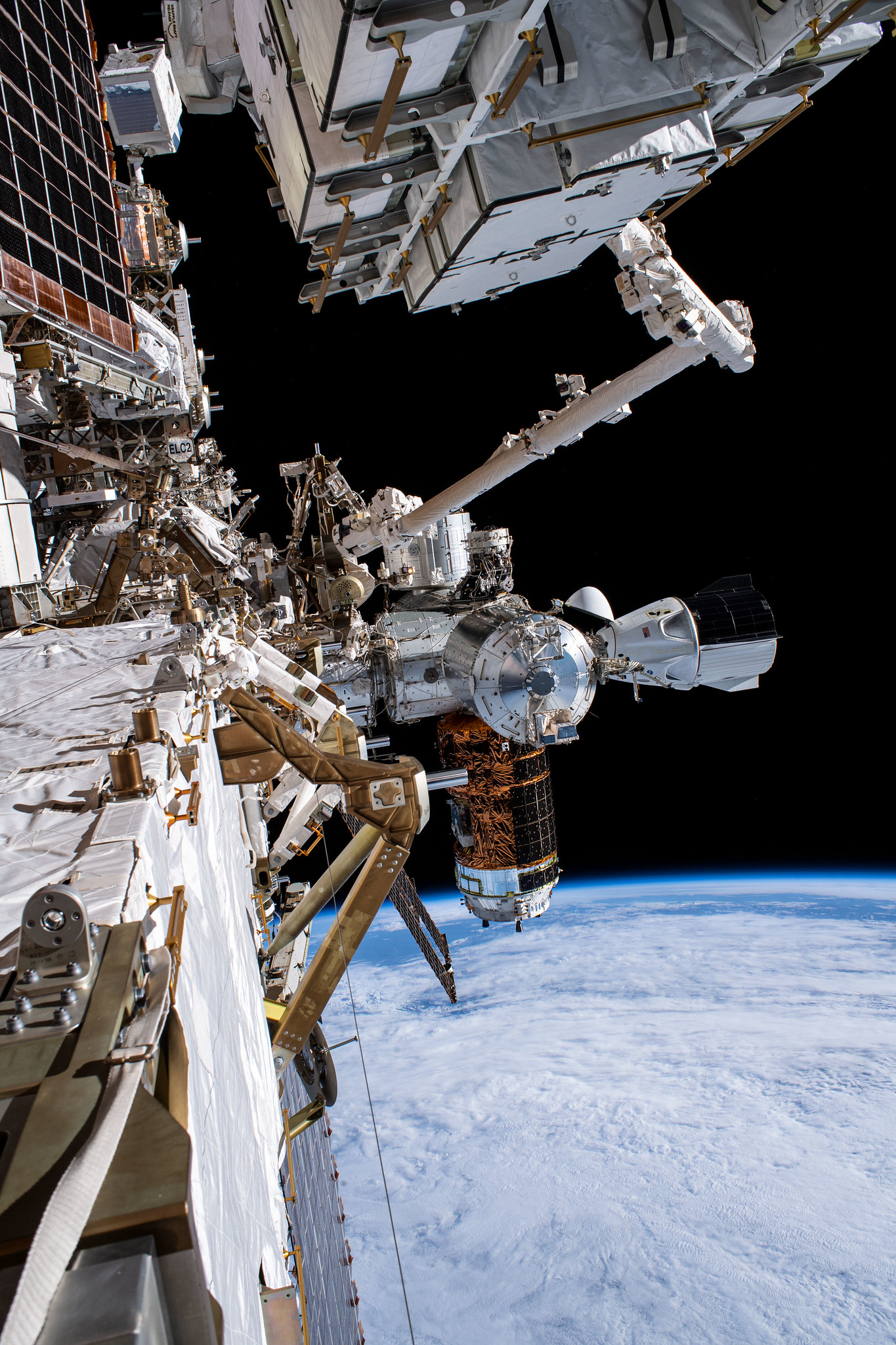
Beyond Amazonas Nexus, February will also see Dragon Endeavour fly her fourth mission, carrying NASA astronauts Steve Bowen and Warren “Woody” Hoburg, Russian cosmonaut Andrei Fedyayev and Sultan Al-Neyadi of the United Arab Emirates (UAE) for a six-month ISS increment. The four men will launch from KSC’s Pad 39A no earlier than 2:07 a.m. EST on 26 February, targeting a half-day, eight-orbit rendezvous and docking at the space-facing (or “zenith”) port of the station’s Harmony node.
Added to that list is the Inmarsat-6 F2 geostationary communications satellite No Earlier Than (NET) 18 February, a second pair of O3B mPOWER broadband satellites bound for Medium Earth Orbit (MEO)—following hard on the heels of a previous pair, lofted last December—and a pair of Maxar-built WorldView Legion satellites to Sun-synchronous orbit. The latter are expected to double Westminster, Colo.-based DigitalGlobe’s capacity to gather high-resolution geospatial imagery by resolving surface details as small as 12 inches (30 centimeters).





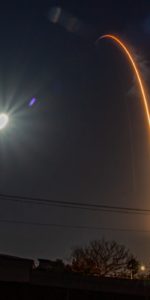
3 Comments
3 Pings & Trackbacks
Pingback:SpaceX Sets New Launch-to-Launch Record, Delivers SES-18/SES-19 Twins to Orbit - AmericaSpace
Pingback:SpaceX Launches First Mission of May, Looks to Busy Month Ahead - AmericaSpace
Pingback:SpaceX Wraps Up Busy June, Looks Ahead to 1 July Euclid Launch - AmericaSpace